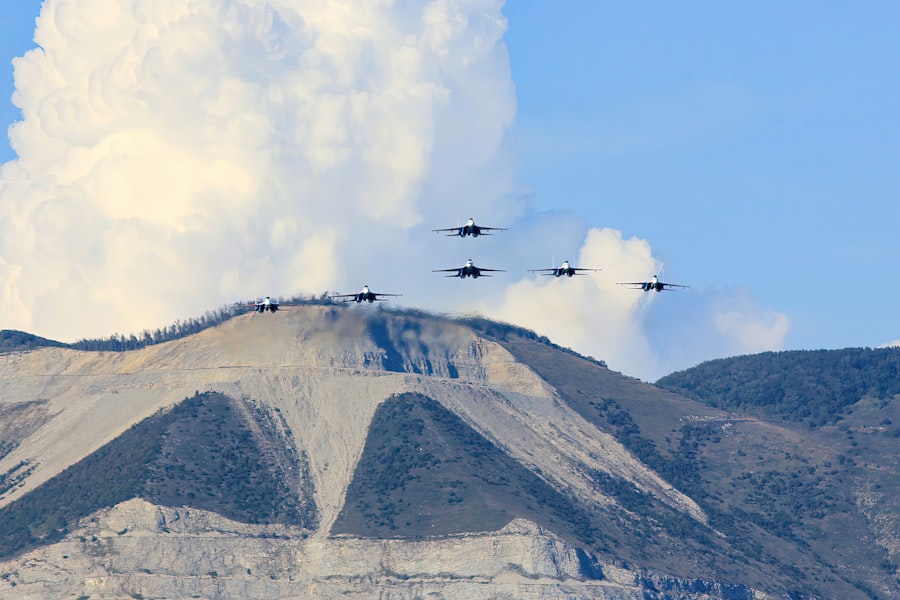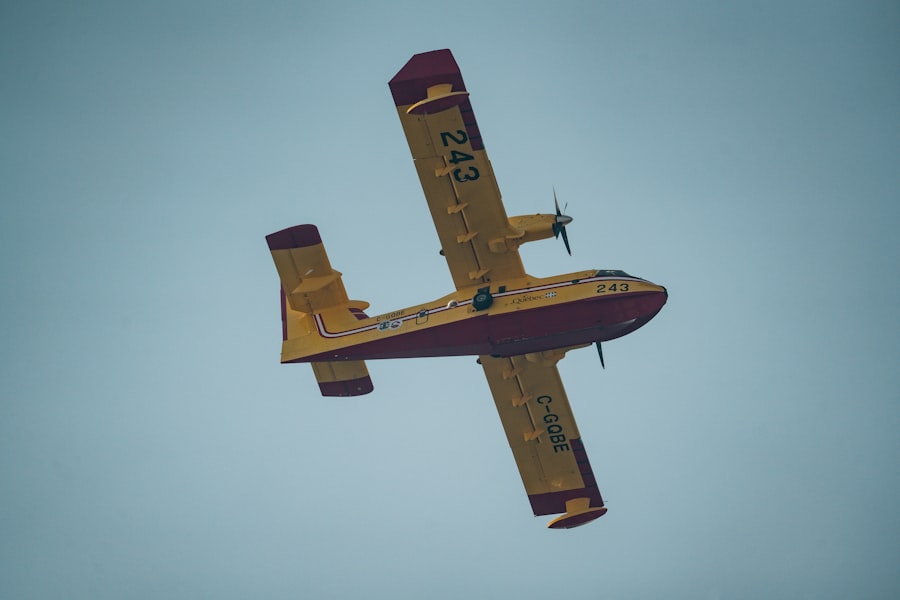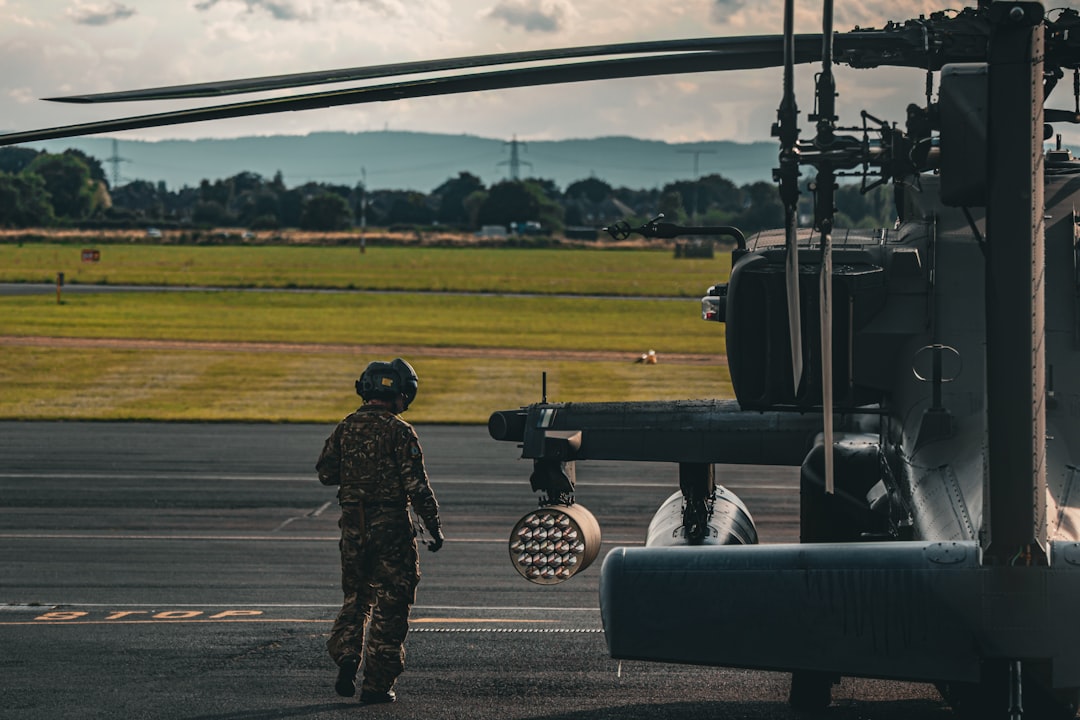Altitude plays a critical role in military logistics, influencing everything from the transportation of supplies to the health and performance of personnel. As military operations increasingly extend into high-altitude environments, understanding the implications of altitude becomes paramount. High-altitude regions, defined as areas above 8,000 feet, present unique challenges that can significantly impact mission success.
The logistics of operating in these environments require careful planning and execution, as the effects of reduced oxygen levels, extreme weather conditions, and rugged terrain can complicate even the most straightforward operations. Military logistics encompasses the planning and execution of the movement and support of forces. In high-altitude settings, this involves not only the transportation of troops and equipment but also the provision of essential supplies such as food, water, and medical care.
The complexities introduced by altitude necessitate a comprehensive understanding of both environmental factors and human physiology. As military forces adapt to modern warfare’s demands, the ability to operate effectively at high altitudes has become a crucial component of strategic planning.
Key Takeaways
- Altitude poses unique challenges for military logistics, impacting equipment, vehicles, and personnel health and performance.
- Operating at high altitudes can lead to decreased oxygen levels, extreme weather conditions, and difficult terrain, making it challenging for military operations.
- Altitude affects equipment and vehicles by reducing engine performance, decreasing fuel efficiency, and causing equipment to operate less effectively.
- Personnel at high altitudes may experience altitude sickness, decreased physical performance, and impaired cognitive function, impacting mission effectiveness.
- Strategies for overcoming altitude-related challenges include acclimatization, specialized equipment, and collaboration with local communities for support and resources.
Challenges of Operating at High Altitudes
Operating at high altitudes presents a myriad of challenges that can hinder military effectiveness. One of the most significant issues is the reduced availability of oxygen, which can lead to altitude sickness among personnel. Symptoms such as headaches, nausea, and fatigue can impair decision-making and physical performance, making it essential for military planners to account for these risks when deploying troops to elevated regions.
Additionally, the harsh weather conditions often found in high-altitude areas can further complicate operations. Extreme cold, high winds, and sudden weather changes can affect both personnel and equipment, leading to potential mission failures. Logistical challenges also arise from the terrain itself.
High-altitude environments are often characterized by steep slopes, rocky surfaces, and limited access routes. This rugged landscape can impede the movement of vehicles and supplies, necessitating alternative transportation methods such as helicopters or pack animals. Furthermore, the limited infrastructure in many high-altitude regions can complicate resupply efforts, requiring innovative solutions to ensure that troops have access to necessary resources.
Effects of Altitude on Equipment and Vehicles

The impact of altitude extends beyond personnel; it also significantly affects military equipment and vehicles. At higher elevations, engines may struggle to perform optimally due to thinner air, which can lead to decreased power output and efficiency. This is particularly relevant for aircraft, where reduced air density can affect lift and maneuverability.
Military planners must consider these factors when selecting aircraft for operations in high-altitude environments, ensuring that they are equipped to handle the unique challenges posed by elevation. Moreover, equipment designed for lower altitudes may not function effectively in high-altitude conditions. For instance, sensitive electronics can be adversely affected by temperature fluctuations and humidity levels that are common in elevated regions.
Additionally, mechanical systems may require modifications or specialized maintenance protocols to ensure reliability under these conditions. As a result, military logistics must incorporate thorough testing and evaluation processes for all equipment intended for use in high-altitude operations.
Impact of Altitude on Personnel Health and Performance
| Altitude Level | Effect on Health and Performance |
|---|---|
| Sea Level (0-2,000 ft) | No significant impact on most individuals |
| Low Altitude (2,000-5,000 ft) | Possible mild decrease in performance for some individuals |
| Moderate Altitude (5,000-8,000 ft) | Decreased performance and increased breathlessness |
| High Altitude (8,000-12,000 ft) | Significant decrease in performance, increased risk of altitude sickness |
| Very High Altitude (12,000-18,000 ft) | Severe impact on performance, increased risk of severe altitude sickness |
| Extreme Altitude (18,000+ ft) | Extreme risk to health and performance, potential for life-threatening conditions |
The health and performance of military personnel are profoundly influenced by altitude. As soldiers ascend to higher elevations, they may experience a range of physiological changes due to decreased oxygen availability. Acute mountain sickness (AMS) is a common concern, with symptoms that can escalate from mild discomfort to severe health issues if not addressed promptly.
The risk of AMS underscores the importance of acclimatization strategies, which allow personnel to gradually adapt to higher altitudes before engaging in strenuous activities. In addition to AMS, altitude can also affect cognitive function and decision-making abilities. Research has shown that reduced oxygen levels can impair mental clarity and reaction times, which are critical in high-stakes military situations.
Consequently, military leaders must prioritize health monitoring and implement strategies to mitigate altitude-related risks. This may include pre-deployment training focused on acclimatization techniques and regular health assessments during operations.
Strategies for Overcoming Altitude-Related Challenges
To effectively navigate the challenges posed by high-altitude environments, military organizations have developed various strategies aimed at overcoming altitude-related obstacles. One key approach is thorough pre-deployment training that emphasizes acclimatization techniques. Soldiers are often encouraged to spend time at intermediate elevations before ascending to their operational altitude, allowing their bodies to adjust gradually to lower oxygen levels.
Additionally, logistical planning must incorporate contingency measures for potential altitude-related issues. This includes ensuring that medical personnel are equipped to handle altitude sickness cases and that evacuation plans are in place for severe instances. Furthermore, utilizing technology such as portable hyperbaric chambers can provide immediate relief for personnel suffering from AMS or other altitude-related ailments.
Importance of Altitude in Mission Planning and Execution

Altitude is a critical factor in mission planning and execution within military operations. Understanding the specific challenges associated with high-altitude environments allows military leaders to develop more effective strategies tailored to the unique conditions they will face. This includes selecting appropriate equipment, determining optimal routes for troop movement, and establishing resupply points that account for the difficulties posed by elevation.
Moreover, altitude considerations extend beyond immediate operational concerns; they also influence long-term strategic planning. Military leaders must assess how altitude impacts regional stability and security dynamics when considering potential engagements in high-altitude areas.
Case Studies of Military Operations in High Altitude Environments
Examining historical case studies of military operations conducted in high-altitude environments provides valuable insights into the complexities involved in such missions. One notable example is the U.S. military’s involvement in Afghanistan, where operations often took place in mountainous regions exceeding 10,000 feet.
The challenges faced by troops included not only altitude sickness but also difficulties in transporting supplies through rugged terrain. Another significant case study is the 2010 rescue operation following an earthquake in Haiti, where U.S. forces had to operate at varying altitudes while providing humanitarian assistance.
The lessons learned from these operations highlight the importance of thorough planning and adaptability when conducting missions in high-altitude settings. By analyzing past experiences, military organizations can refine their approaches and improve future operational effectiveness.
Role of Technology in Addressing Altitude-Related Logistics Issues
Technology plays a pivotal role in addressing altitude-related logistics challenges faced by military forces. Innovations in transportation technology have led to the development of specialized aircraft capable of operating efficiently at high elevations. These aircraft are designed with enhanced engines and aerodynamic features that allow them to maintain performance despite reduced air density.
Additionally, advancements in communication technology have improved coordination among units operating in challenging terrains. Satellite communications and portable data systems enable real-time information sharing, allowing commanders to make informed decisions quickly. Furthermore, wearable technology that monitors vital signs can provide critical data on personnel health during high-altitude operations, facilitating timely interventions when necessary.
Training and Preparation for Operations at High Altitudes
Effective training is essential for preparing military personnel for operations at high altitudes. Specialized training programs focus on acclimatization techniques, physical conditioning, and survival skills tailored to elevated environments. Soldiers are often required to participate in exercises that simulate high-altitude conditions, allowing them to experience firsthand the physiological effects of reduced oxygen levels.
Moreover, training programs emphasize teamwork and communication skills essential for operating effectively in challenging terrains. Soldiers learn how to navigate difficult landscapes while maintaining situational awareness and coordinating with their units. This preparation not only enhances individual performance but also fosters cohesion among team members, which is vital for success in high-stakes situations.
Collaboration with Local Communities in High Altitude Environments
Collaboration with local communities is an essential aspect of successful military operations in high-altitude environments. Engaging with local populations can provide valuable insights into regional dynamics and cultural considerations that may impact mission success. Local knowledge about terrain, weather patterns, and resource availability can enhance logistical planning and execution.
Furthermore, building positive relationships with local communities fosters goodwill and cooperation during operations. This collaboration can lead to improved access to resources such as food and shelter while also facilitating smoother interactions with civilians during missions. By recognizing the importance of local partnerships, military forces can enhance their operational effectiveness while contributing positively to regional stability.
Future Trends and Considerations for Altitude-Related Logistics in Military Operations
As military operations continue to evolve, future trends will likely shape how altitude-related logistics are approached. Advances in technology will play a significant role in enhancing operational capabilities at high altitudes. Innovations such as unmanned aerial vehicles (UAVs) may provide new avenues for supply delivery and reconnaissance missions in challenging terrains.
Additionally, ongoing research into human physiology at altitude will inform training protocols and health monitoring practices for personnel deployed in elevated environments. Understanding how individuals respond to altitude will enable military organizations to develop more effective acclimatization strategies and health interventions. In conclusion, altitude presents both challenges and opportunities for military logistics.
By understanding the complexities associated with operating at high elevations—ranging from personnel health impacts to equipment performance—military organizations can enhance their operational readiness and effectiveness in diverse environments. Through strategic planning, technological advancements, comprehensive training programs, and collaboration with local communities, military forces can navigate the unique demands posed by high-altitude operations while ensuring mission success.
Altitude can significantly impact military logistics, affecting everything from transportation to communication. High-altitude environments pose unique challenges, such as reduced oxygen levels, which can impair both personnel and machinery performance. Additionally, the thin air can affect the lift capabilities of aircraft, complicating the delivery of supplies and personnel. For a deeper understanding of how altitude influences military operations and logistics, you can explore a related article on this topic by visiting this page. This resource provides insights into the strategic adjustments necessary to maintain efficiency and effectiveness in high-altitude military operations.
WATCH THIS! The Hidden Reason No One Can Invade America | A Geographical Analysis
FAQs
What is the effect of altitude on military logistics?
Altitude can have a significant impact on military logistics, affecting everything from transportation and communication to the performance of equipment and personnel.
How does altitude affect transportation in military logistics?
At higher altitudes, the air is thinner, which can reduce engine performance and payload capacity for aircraft and vehicles. This can result in longer travel times and reduced efficiency in transporting supplies and personnel.
What impact does altitude have on communication in military logistics?
Altitude can affect the range and effectiveness of communication systems, including radios and satellite communications. In mountainous terrain, line-of-sight communication may be limited, requiring the use of relay stations or alternative communication methods.
How does altitude affect the performance of equipment and personnel in military logistics?
At higher altitudes, the reduced oxygen levels can affect the performance of both equipment and personnel. Aircraft may have reduced lift capacity, and personnel may experience decreased physical and cognitive performance, requiring adjustments in operational planning and support.
What measures can be taken to mitigate the effects of altitude on military logistics?
Military forces can employ various strategies to mitigate the effects of altitude, including using specialized equipment designed for high-altitude operations, acclimatizing personnel to the altitude, and adjusting logistical planning to account for reduced performance and capacity.
